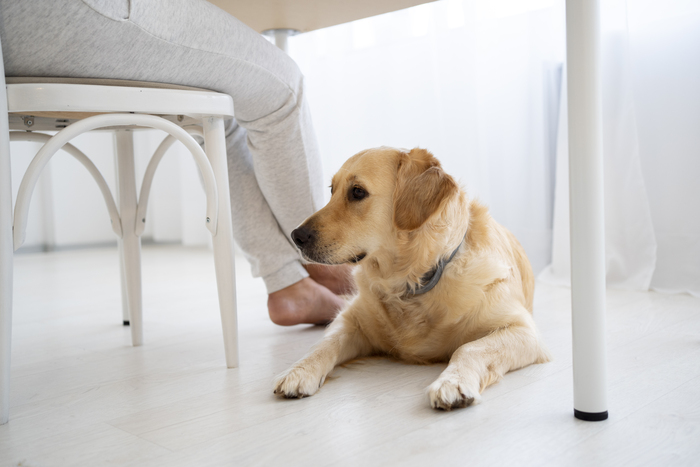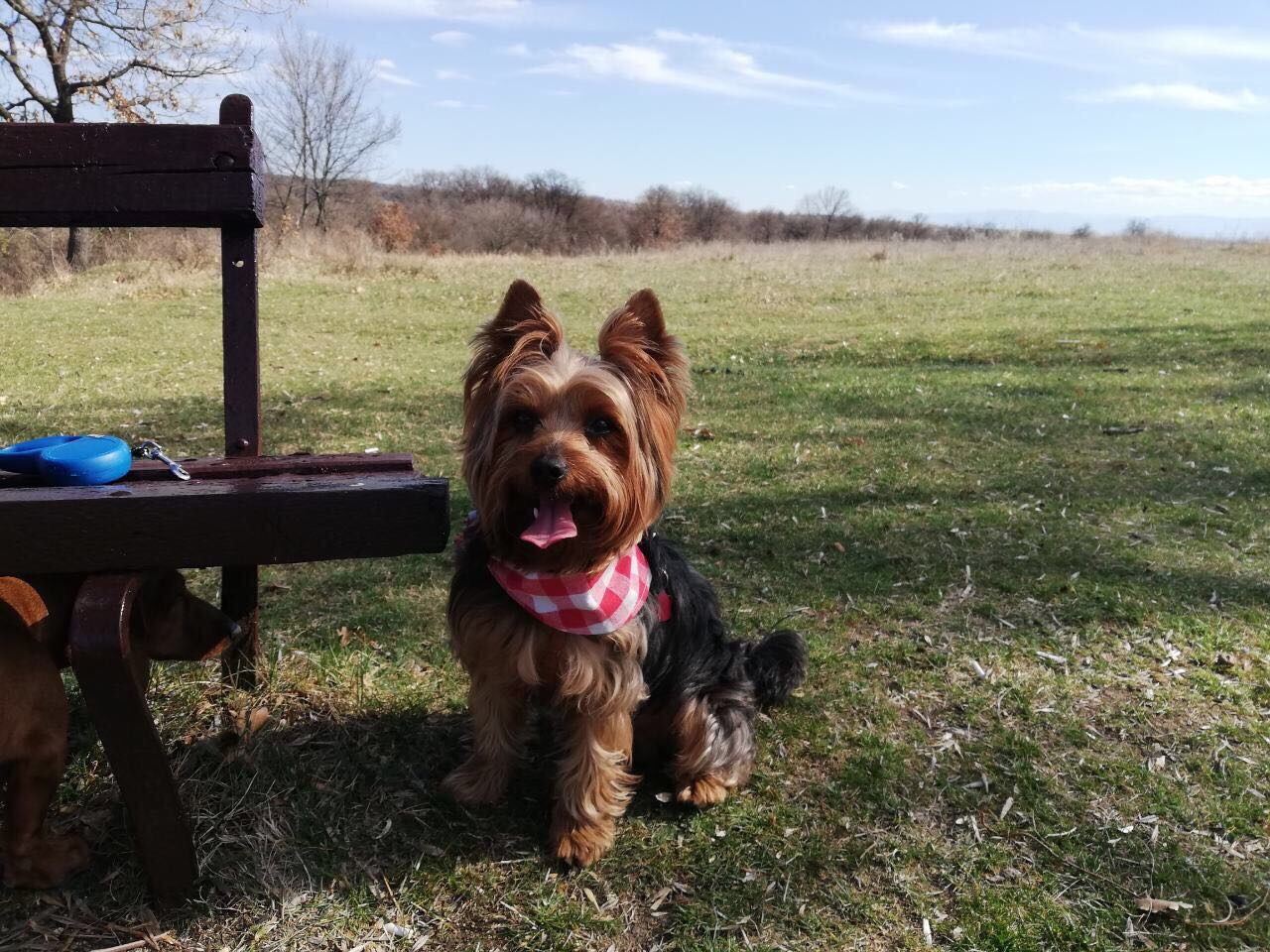
Most of us who are dog parents may admit, that cuddling with our beloved paw friends is one of the most wonderful things that we have experienced! It is not just the physical contact, that makes us feel needed and taken care of, but the unconditional love that our paw family members express to us. Regardless of how strong the bond with our dogs is, we should never forget, that they have their own way to express their emotions both positive and negative. In order for our interaction and relationship to improve we need to know our paw friends as individuals, which also includes their body language and behavior.
Many of you will
relate to the situation where your dog comes and sits on your feet.
Have you ever wondered what this type of behavior means? Is it good,
bad, or normal? Today will let you know the answer to that question.
Love & Affection
Yes, absolutely! Showing his/her affection and love to you is one of the common reasons for this type of behavior!
Dogs have their own temperaments and personalities and while some canines are a bit independent, stubborn, or prefer the company of other pets in the household, many of them genuinely enjoy cuddling and having physical contact with their owners. Sitting on your feet is a type of behavior that can be interpreted as a sign of love toward the owner and a desire for physical contact.
If you can describe your doggy as a bit “clingy”, he/she may sit on your feet in order to get ready to follow you the moment you decide to make even a small step and change your position.
Warmth
If you have a new paw family member, who is still very young, he/she may seek the warmth of his/her mother. Staying close to their owner’s body is a natural instinct in dogs, that can be tracked down to the interaction with their mothers at a young age. Sitting on your feet or just being very close to you, may indicate your pup’s need for warmth and love.
Stress & Anxiety
Let’s see this type of behavior from a different perspective- not as a sign of love, but as a sign of stress and anxiety. It can happen that your paw friend is feeling stressed and overwhelmed when visiting a new place, or meeting new people, dogs, or other animals. Also, certain sounds, especially if they are too loud like those produced by fireworks, thunderstorms, or construction work, typically make dogs fearful. If you are not sure whether your paw friend is feeling stressed or not, you should take his/her body language and environment into account. The following signs clearly indicate that your pup is feeling anxious:
- It is shaking;
- It has its tale tucked behind its back legs;
- It has put its ears back;
- It is panting;
- It is drooling.
This type of behavior is likely to be noticed at the veterinarian’s office and is common for dogs who have had a very negative experience there.
Dogs, who are prone to separation anxiety, are also likely to sit on their owners’ feet as some sort of reassurance. As mentioned above, some of our paw friends tend to be a bit clingy and needy. This is usually valid for dogs at a very young age and in most cases, our paw friends manage to outgrow this type of behavior.
Here comes the question-How to address this type of behavior when caused by stress and anxiety?
In some cases, you can just remove the triggers from the environment or move your pup, in case the first option is not possible. In other cases, you may need to socialize your pup, so it does not feel stressed when interacting with other dogs. Try to meet your paw friend with obedient dogs who are healthy, vaccinated, and whose social behavior may have a positive impact on him/her. Dogs learn to pick up on the social cues of other dogs, so interacting with well-mannered dogs can lead to improving your paw friend’s behavior.
If removing the trigger from the environment would not be possible, or if you are looking for a long-term solution, training including desensitization and counter-conditioning, might be the best option. You should teach your dog basic obedience, and also utilize the so-called desensitization and counter-conditioning. These two terms describe popular techniques applied to the training when the effect of a certain stimulus/trigger needs to be drastically reduced and the general attitude of the dog toward that stimulus should be changed. In other words- if your dog is scared of something and sits on your feet to seek protection, you should apply these techniques.
Desensitization is related to gradual exposure to the stimuli/stimulus. In the beginning, the intensity of the stimulus should be very low, so the dog does not show any reaction to it. A low intensity could include a very long distance, a very quiet sound, or a very subtle odor...it depends on what the stimulus is. The intensity should be increased step by step.
While doing that, you should also implement counter-conditioning, which means rewarding the dog, while the stimuli are present. This approach aims at changing the dog’s attitude from negative to positive. Since treats or any type of reward will be given to the dog in the presence of the stimuli, he/she may start associating these with the reward and not with fear.
However, there is one thing here that you should keep in mind- if your dog is terrified of something, proving treats/food in its presence, will only lead to a negative association with the food itself. If the levels of stress and anxiety are too high, try to use desensitization first. As mentioned above, basic obedience will also be helpful.

Guarding the Owner
Some dogs display resource guarding as a type of behavior and sitting on your feet might be interpreted as a sign of that behavior. Resource guarding usually affects the dog’s food, toys, and territory, but can also be directed to his/her owner. Similarly to addressing stressful triggers, you can also use desensitization and counter-conditioning here. You may want to practice with a relative or friend. Approach them slowly by making a few steps, then give your dog a command to sit and reward him/her for being calm and well-mannered. Keep a long distance in the beginning and do not forget to show your dog how well he/she performs when he/she remains calm and controls his/her impulses. If you notice that your paw friend is starting to get frustrated and want to sit on your feet or otherwise “guard” you, you should step back in order to increase the distance. Wait for your canine to settle, and after a few minutes try again. You may need to practice this several times, involving different people and eventually their dogs. Remember to be patient and consistent.
Learned Type of Behavior
If your dog has learned that sitting on your feet means for him/her receiving a lot of attention, treats, praise, being petted...or any type of positive outcome, he/she is likely to continue exhibiting this behavior. Dogs are smart and learn that if certain behavior leads to a certain outcome (which is good for them), they will continue displaying this behavior. The more positive the outcome is, the greater the motivation will be.
If you enjoy having your dog on your feet, you just need to keep encouraging him/her. If not, then you should reinforce the wanted behavior and ignore that you do not want him/her to show. We do entirely support positive reinforcement, so would recommend that you reward the good behaviors instead of punishing the unwanted ones.
What if My Dog Does Not Want to Sit On My Feet?
As mentioned at the beginning of the article, dogs are individuals and have different temperaments. Some dogs are more clingy and people-oriented, and others prefer to not have so much physical contact. Also, the way they express their love and care can be different. Some canines may enjoy sitting next to you or lying on your lap, instead of on your feet.
If your doggie does not like sitting on your feet, this does not mean that he/she does not love you. Also, you can always encourage him/her to come to sit on your feet by providing him/her with his/her favorite treats, a lot of praise, and cuddles!











